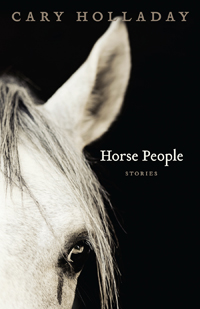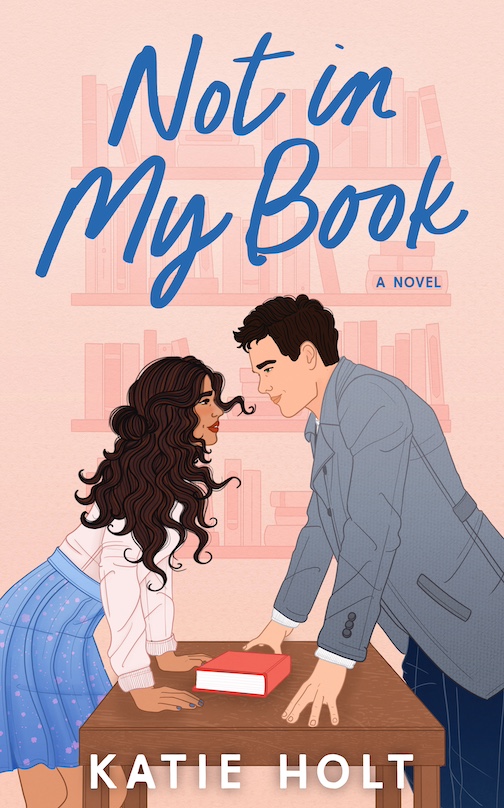The Many Guises of Cowardice and Courage
Memphis author Cary Holladay has written a lyrical new collection of stories that spans generations
Cary Holladay’s lyrical new collection of linked stories, Horse People, follows various members of a prosperous family in Orange County, Virginia, from the Civil War through World War II and beyond. The book opens with “The Bridge,” set in 1861, in which mill owner Henry Fenton hires an unlikely crew of locals to guard a bridge over the Rapidan River, day and night, from invasion by Yankee troops. Bonnie Hazlitt is a disgraced unwed mother, the Pratt brothers are seventy-year-old twins, and Burrell is a young boy with only one eye and a name that “rhymes with squirrel.” In addition to patrolling the bridge, the recruits are expected to visit the sickbed of Fenton’s twenty-eight-year-old wife, Mary Jane, who is dying.
 In this mesmerizing passage, Burrell looks forward to telling Mary Jane about the animals he has observed—or imagined—crossing the bridge during his night watch:
In this mesmerizing passage, Burrell looks forward to telling Mary Jane about the animals he has observed—or imagined—crossing the bridge during his night watch:
Animals come by then, trotting, lolloping, slithering, flying, padding, powered by their invisible hearts, their eyes bright as coins. … He thinks he’s dreaming when herd animals appear: goats and sheep, one or two as if ark-bound. They have business to tend to. He could reach out and pet their flanks, their hides. He tries, and they swerve out of reach. Porcupine, bear, turkey, squirrel, and pig. Their nighttime travels have a dapper purpose and camaraderie. Snakes move fast at night, and toads jump high as Burrell’s shoulder. Tortoises, he swears, nearly gallop. They have no fear of him, this boy crouched at one end of the bridge, proud of missing his sleep.
The bridge guards are happy to have been given a sense of purpose during wartime, while Mary Jane can only dream of childhood memories, her own dead daughter, and the woman Henry will marry after she is gone.
Henry Fenton does remarry and have other children, including the good-hearted Richard, who grows up to marry Nelle Scott, a harsh, razor-sharp, privileged daughter of Yankee parents. Nelle and Richard go on to raise seven sons, but breeding horses is Nelle’s true love, until she meets and begins an affair with horse trainer Ben Burleigh. In the central story of the family arc and one of the strongest in the collection, “Nelle on the Grass,” the forty-eight-year-old title character struggles to reconcile her often reluctant roles as wife and mother with her passionate feelings for Burleigh: “A thin cloth will smother you as well as a thick one,” she thinks. “Richard’s eyes are river-gray; his eyes in photographs are those of his ancestors—you see right through them to the backs of their heads.”
 Many of the stories are told from Nelle’s point of view, but in “Hollyhocks,” her adult son Dudley offers a sweetly poignant perspective on growing up in the often frightening, sometimes violent, and always troubled Fenton family. Set at Christmastime in 1951—the latest setting in the cycle—the story chronicles tensions between the now-grown brothers and their very different wives. Dudley is the next-to-youngest son and the only one unmarried. He assuages his loneliness with alcohol and loves Pamela, his younger brother’s wife, from afar. Late at night, with the rest of the house asleep, Dudley and Pamela share a private drink by the Christmas tree and the news that Pamela is pregnant with her first child. He tenderly imagines her as a mother: “Dudley knows his feelings for her will never change. She is his age, and she will put on weight with each child, and her hair will go gray early. Unlike the other wives, she’ll never color it, will stop wearing makeup and lipstick, and will wear shorts bought at a discount store and socks that fall down around her ankles, but to him, she’ll always be breathtaking.”
Many of the stories are told from Nelle’s point of view, but in “Hollyhocks,” her adult son Dudley offers a sweetly poignant perspective on growing up in the often frightening, sometimes violent, and always troubled Fenton family. Set at Christmastime in 1951—the latest setting in the cycle—the story chronicles tensions between the now-grown brothers and their very different wives. Dudley is the next-to-youngest son and the only one unmarried. He assuages his loneliness with alcohol and loves Pamela, his younger brother’s wife, from afar. Late at night, with the rest of the house asleep, Dudley and Pamela share a private drink by the Christmas tree and the news that Pamela is pregnant with her first child. He tenderly imagines her as a mother: “Dudley knows his feelings for her will never change. She is his age, and she will put on weight with each child, and her hair will go gray early. Unlike the other wives, she’ll never color it, will stop wearing makeup and lipstick, and will wear shorts bought at a discount store and socks that fall down around her ankles, but to him, she’ll always be breathtaking.”
For the most part, Horse People presents an unflattering view of a family wealthy enough to breed horses, whose unhappiness and preoccupations often pale in significance to the suffering experienced by those around them—other human beings held at arm’s length as dictated by the social norms of the day and the Fentons’ own self-absorption. The outsiders moving through this insulated and often heartless world include a woman carrying eggs to market, pushed from a cliff by her husband; a violent madwoman from the local brothel run over by the wagon intended to transport her to an asylum; an impoverished gypsy family whose fortunetelling séance goes terribly wrong; the stable boy offered room and board and precious little else after his father commits suicide; a young house cook sent forth from his home deep in the woods to support his family as his father lies dying from a spider bite; and a gentle horse trainer stabbed to death by his wife outside a general store.
Holladay crafts small, intimate portraits of her characters as they confront timeless themes of birth and death, compassion and cruelty, memory and loss, and the many guises of cowardice and courage. She uses the struggles of the peripheral characters to hold up a mirror to the Fenton family’s comfortable yet ultimately troubled lives and their obsession with the past. It’s a vision they only occasionally glimpse themselves and never fully comprehend. In “Monstrosities,” a cold, unrepentant Nelle contemplates eternity as she gazes into the night sky: “Who doesn’t think about it then, one’s own death?” she wonders. “Unknowable, that future, everlasting life, and nothing she expects she would enjoy.”
Cary Holladay will read from and sign copies of Horse People at Burke’s Book Store in Memphis on March 22 at 5:30 p.m., and in Buttrick Hall, Room 101, on the Vanderbilt University campus in Nashville on March 28 at 7 p.m. Both events are free and open to the public.


